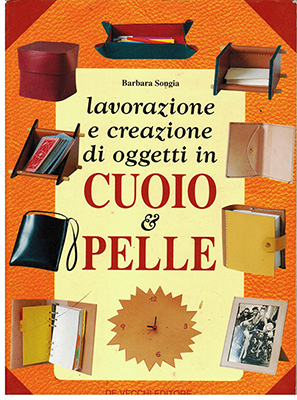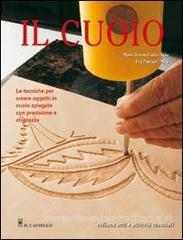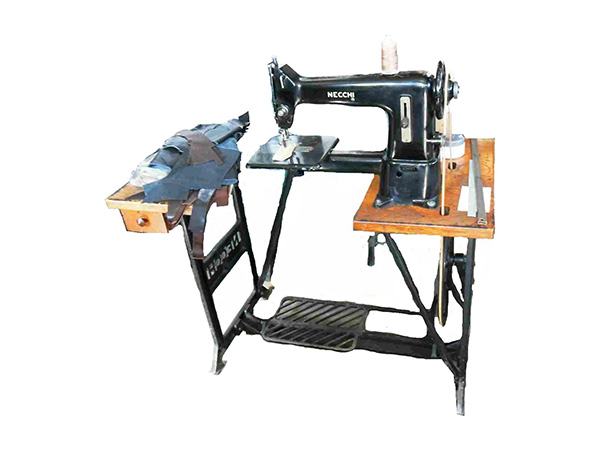How to waterproof a water bottle in hide?
 Used since ancient times, with the name of otre (wineskin) it was the cheapest container, light weight, small size and unbreakable.
Used since ancient times, with the name of otre (wineskin) it was the cheapest container, light weight, small size and unbreakable.
Usually made in leather and hide, in 1860 it was introduced in wood, and from 1912 in aluminium.
In time, a friend for the cyclists that filled up, emptied, grasped, thrown away and a lot of times passed over to the rival, today it’s become an accessory from sports people, to the tourists who more has more puts.
Did you ever ask yourself how water bottles are made in a way to be water proof?
Following, we’ll try to understand how to make a water bottle, made in hide water proof, like the one you can see in the above photo made by Katja Zaccheo.
To help us there are suggestions from the experts in this sector on our facebook group “Lavorazione Artigianale Pelle e Cuoio”.
Having a model to follow, it’s important for the creation of objects in leather or hide.
Following are the major steps, that will help you to make a paper model.
The paper model is the base instrument you need to begin creating any type of object or other in leather or hide.
 "Processing and creations of hide and leather products"
"Processing and creations of hide and leather products"
by Barbara Songia, De Vecchi editore
A taste of the art of treating and shaping leather. Pages that tell us the evolution of the working methods, about the different and various uses of leather that has become a social perception, of the work of tanners and leather modellers. From the slave work to the formation of corporations in the Middle ages.
We suggest another interesting publication regarding, working with hide techniques. Following, the description of some passages, for us important, which you will find in the “THE HIDE” by Maria Teresa LIadò, the Riba and Eva Pascual the Mirò, editor. THE CASTLE 2007, 160 p.

Cow hide
This type of hide(leather) may be used to make small leather goods. The thickness varies from 0.9 to 8 mm, depending on what its used for.The characteristic element is the smell, week but unmistakable, at first the color is light and then with time it becomes darker.
Bovine
This leather is used mostly for bags and briefcases, belts and other objects that require hard leather.
The thickness may be between 3 and 7 mm and its available in different colors and different textures or schemes.
More important manifestations, events, fairs, courses and other initiatives related to the leather and hide world promoted in Italy and abroad.
Probabilmente anche tu in questo momento stai indossando qualcosa in pelle, un capo di abbigliamento, una cintura o semplicemente un paio di scarpe rivestite e/o foderate in pelle.
Ci stiamo sbagliando? Prova a guardare con attenzione il cinturino del tuo orologio oppure l'etichetta del tuo jeans dov'è stata marchiata o incisa la marca ed il modello del pantalone.
Il pellame è stato uno dei primi materiali che l'uomo ha imparato a lavorare e ad utilizzare. E' stato usato come recipiente, come indumento ed anche come semplice elemento decorativo. Le caratteristiche di questo materiale naturale lo rendono malleabile ed adatto ad ogni uso.
La pelle, originariamente, era ricavata solo dagli animali frutto di battute di caccia e, successivamente, anche dagli animali di allevamento, riciclando un materiale considerato di scarto nella catena alimentare.
Le pelli, prima di essere utilizzate, necessitano di un accurato trattamento, per evitare che il prodotto vada in putrefazione ad alte temperature o si irrigidisca alla basse temperature. La "concia della pelle" è il processso lavorativo che si deve seguire per evitare questi inconvenienti.
Porosità, cicatrici, rughe, differenze di tonalità non devono essere considerati difetti, ma testimonianze della genuinità di questo materiale così vivo e naturale.
Attualmente esistono diversi modi per trattare le pelli: se inizialmente venivano cosparse di grasso per renderle più resistente e flessibile, durante i secoli questo processo ha subito numerose variazioni, fino ad arrivare ai metodi principalmente utilizzati per la concia, che si basano sull'uso del Cromo III o del Tannino (concia vegetale agli estratti di corteccia).
Un'accurata scelta del pellame, opportunamente trattato con i migliori processi di concia, ed il successivo processo di lavorazione (tramandato, adattato e migliorato duranti gli anni) del prodotto, sono fattori determinanti per ottenere oggetti raffinati e di qualità.
Sono questi gli elementi che ci hanno distinto in questi anni. Nella nostra bottega utilizziamo solo materiali di prima qualità ed ogni prodotto viene realizzato secondo la migliore tecnica artigianale.
Gli apprendistato presso i migliori artigiani molisani, pugliesi e marchigiani ci permettono di scegliere la tecnica migliore per la realizzazione di qualsiasi prodotto.
Some books, and magazines dedicated to leather and hide and their craftsmanship.

What are the techniques craftsmen use?
In this section, an explanation on the methods that the masters in this field adapt when working with leather and hide.

A description on how cutting and sewing, our experts have produced some of their most interesting creations.

Different suggestions and useful information, to understand better this sector, and its various fields and why not, try to create your own leather object
This section is dedicated to news regarding curious and the extravagant world of leather and hide, for example the most strangest and bizarre techniques. The most unusual and extravagant work.

An online gallery with the most interesting, particular, extravagant and unique creations realized in the world, by craftsmen, artists or people who just do it for hobby, for profession or passion dedicate their time to working with this material.

A calendar with dates of the best manifestations, events, courses, fairs and other initiatives, related to the leather world, and leather promotions in Italy and Abroad.